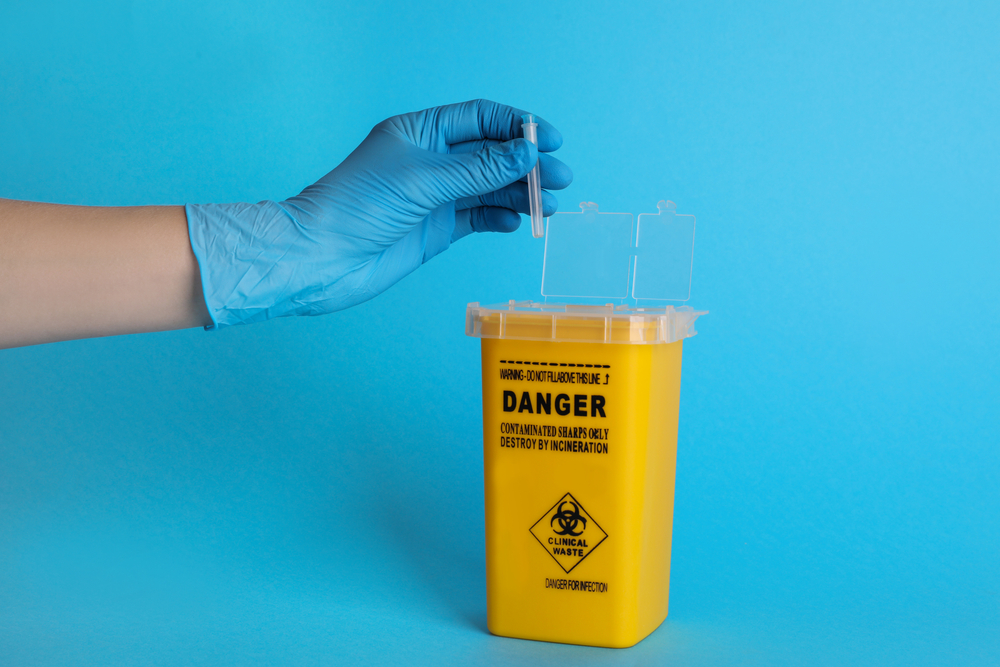Most sharps injuries—84 percent—occur among healthcare workers, the National Institute for Occupational Safety and Health (NIOSH) confirmed in a recently released analysis. Injuries from a needle or other sharp objects can expose workers to bloodborne pathogens (BBP), such as human immunodeficiency virus, hepatitis B, hepatitis C, and other infectious diseases, NIOSH said in the September edition of its eNews.
While acknowledging that BBP and sharps injuries are a concern specific to healthcare workers, institute researchers found that sharps injuries also occur among workers in other industries.
NIOSH researchers found that after health care, sharps injuries occur most often in four other industries:
- Justice, public order, and safety;
- Traveler accommodation;
- Colleges, universities, and professional schools, such as junior colleges; and
- Pharmacies and drug stores.
Retail pharmacy chain Rite Aid Corp. recently reached a settlement agreement with the Occupational Safety and Health Administration (OSHA) to resolve the agency’s citation for a BBP violation at the chain’s Niagara Falls, New York, store.
Rite Aid agreed to implement a program to protect employees, including front-end customer service staff, against BBP hazards at its approximately 370 New Jersey and New York stores.
The NIOSH analysis looked at an estimated 875,900 work-related sharps injuries that were treated in hospital emergency departments over a 15-year period. Most sharps injuries occurred among female workers and younger workers—under 35 years old.
Healthcare workers had an injury rate of 16.7 per 10,000 full-time employees (FTE)—a rate more than six times the rate for all workers of 2.7 per 10,000 FTE.
NIOSH reiterated the need for standardized education about preventing sharps injuries for all workers who are at risk. The institute said that research should continue to focus on how and when sharps injuries occur, especially among younger healthcare workers.
A report on NIOSH’s research appeared in the June issue of the Journal of Occupational and Environmental Medicine.
Updated NIOSH-Approved Respirator List
The institute also announced the availability of an updated NIOSH Certified Equipment List search tool. While OSHA and the Food and Drug Administration set requirements for respirator use, NIOSH tests respiratory protection devices and certifies devices that meet its test requirements.
Industrial hygienists, respirator users, and safety managers can consult the list to:
- Determine if the respirator they are currently using or considering using is NIOSH-certified.
- Select the appropriate respirator to protect against the hazards they (or their workers) are exposed to.
- Locate the correct replacement component parts for respirators with chemical, biological, radiological, and nuclear protections.
- Learn what respirators are designed to provide protection from chemical, biological, radiological, and nuclear agents and what manufacturers produce units meeting the NIOSH standards.
The updated version of the certified equipment list search is reformatted and includes quick searches for identifying respirators of current interest.
NIOSH also announced the release of a new online guide for preventing occupational noise-induced hearing loss. The institute also announced that it is joining the Centers for Agricultural Safety and Health (Ag Centers) in recognizing National Farm Safety and Health Week, September 17–23.

